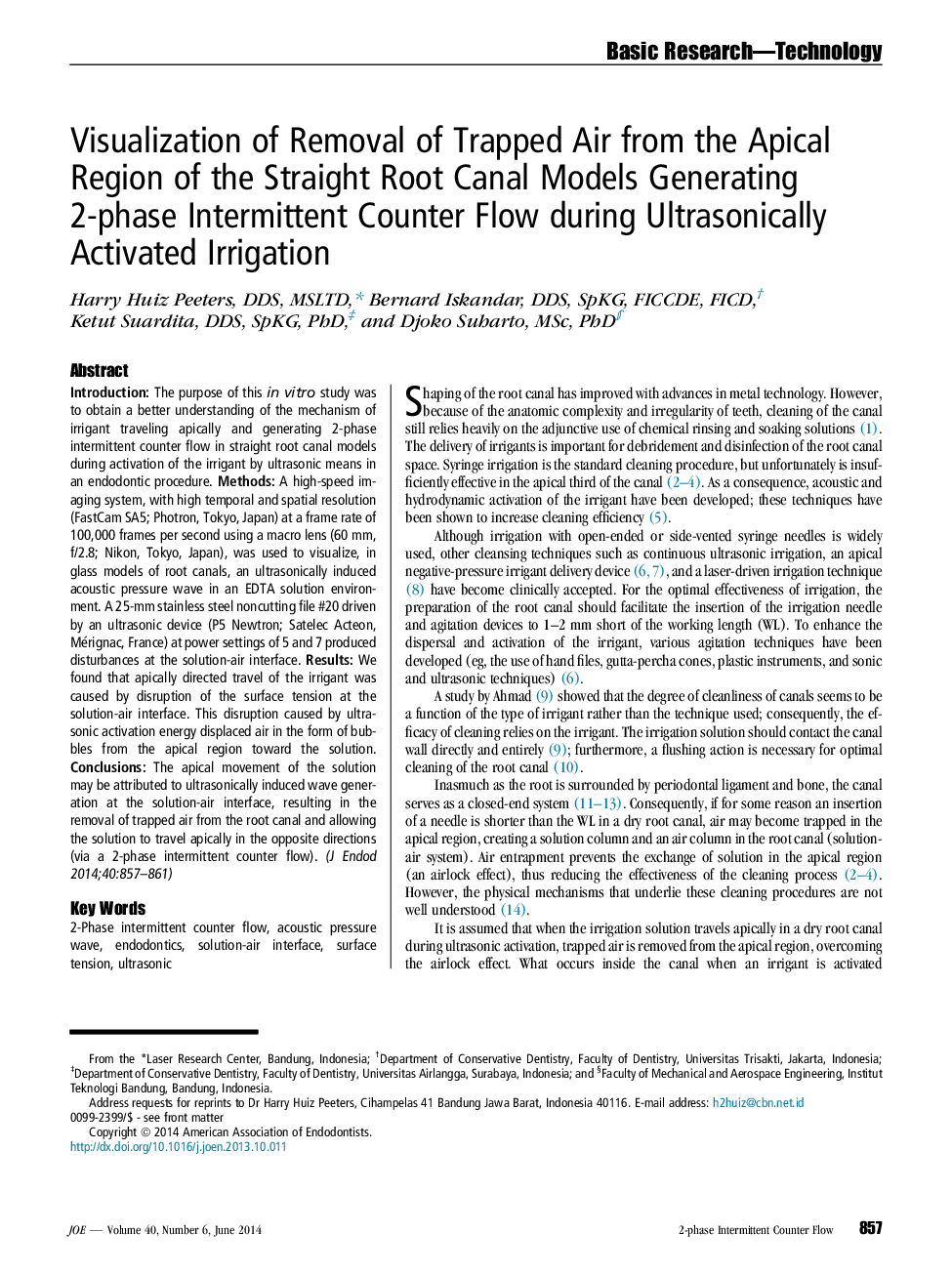| Article ID | Journal | Published Year | Pages | File Type |
|---|---|---|---|---|
| 3146873 | Journal of Endodontics | 2014 | 5 Pages |
IntroductionThe purpose of this in vitro study was to obtain a better understanding of the mechanism of irrigant traveling apically and generating 2-phase intermittent counter flow in straight root canal models during activation of the irrigant by ultrasonic means in an endodontic procedure.MethodsA high-speed imaging system, with high temporal and spatial resolution (FastCam SA5; Photron, Tokyo, Japan) at a frame rate of 100,000 frames per second using a macro lens (60 mm, f/2.8; Nikon, Tokyo, Japan), was used to visualize, in glass models of root canals, an ultrasonically induced acoustic pressure wave in an EDTA solution environment. A 25-mm stainless steel noncutting file #20 driven by an ultrasonic device (P5 Newtron; Satelec Acteon, Mérignac, France) at power settings of 5 and 7 produced disturbances at the solution-air interface.ResultsWe found that apically directed travel of the irrigant was caused by disruption of the surface tension at the solution-air interface. This disruption caused by ultrasonic activation energy displaced air in the form of bubbles from the apical region toward the solution.ConclusionsThe apical movement of the solution may be attributed to ultrasonically induced wave generation at the solution-air interface, resulting in the removal of trapped air from the root canal and allowing the solution to travel apically in the opposite directions (via a 2-phase intermittent counter flow).
